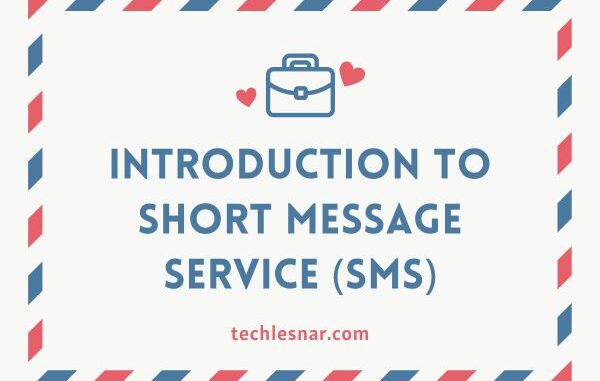
Hey there! Let’s dive into the world of Short Message Service (SMS), a nifty technology that lets you send and receive text messages on your mobile phone. No rocket science here, just good old communication!
Getting to Know SMS
So, what’s SMS? It’s like magic for your phone, allowing you to shoot text messages back and forth. You’ve got a cap of 160 characters, but here’s the secret sauce: it crams 7-bit ASCII characters into 8-bit octets. Don’t worry about the jargon; it just means you can type messages directly on your phone or fire them off from your computer.
SMS Flavors: Two Types
There are two basic types of SMS in town:
- Point-to-Point Communication: This is the go-to service for regular folks like you and me. It’s all about messages between two SMS buddies.
- SMS Cell Broadcast Service (SMSCB): This one’s for the big leagues – network operators. They use it to broadcast the same message to a bunch of SMS subscribers. Think weather alerts and news blasts.
Behind the Scenes: SMS Network Architecture
Picture this: SMS struts its stuff on the Global System for Mobile Communications (GSM) runway. It’s a store-and-forward deal. Messages aren’t jetting straight to their destination; instead, they take a pitstop at the SMS Message Centre (SMSMC) before reaching their buddy.
The SMSMC is like the message maestro, orchestrating the flow. Your text message hits the SMSMC first, takes a little nap, and then gets delivered to your friend when they’re ready. There’s even a shelf life for these messages – the SMSMC decides how long it keeps them. You can also play boss and set a shorter expiry if you’re feeling fancy.
Oh, and the SMSMC isn’t just about messages. It handles the money matters too, making sure the right peeps get billed. Usually, there’s at least one SMSMC hanging out per network.
The Power of Point-to-Point Communication
Let’s zoom in on the first type of SMS – Point-to-Point Communication. This is your everyday SMS chat, the kind you have with your pals. You type out a message, hit send, and voila! It zips through the network, making its way to your buddy’s phone. Simple, right? It’s the digital version of passing notes in class, but way more efficient.
Imagine you’re sharing the latest gossip or making plans for the weekend. That’s the magic of point-to-point communication – connecting people, one text at a time.
Unveiling SMS Cell Broadcast Service (SMSCB)
Now, let’s talk about the SMS rockstar – the SMS Cell Broadcast Service (SMSCB). This isn’t your regular one-on-one convo; it’s a grand broadcast to a whole crew of SMS subscribers. Network operators use this feature for important announcements that everyone needs to know, like weather updates or breaking news.
Think of it as the operator hitting the airwaves, delivering messages to multiple phones at once. It’s the superhero of mass communication, ensuring important info reaches the masses in a flash.
SMS Network Architecture in Action
Time to peek behind the SMS curtain and see how the network architecture plays its part. When you hit send on that text, it’s not a direct flight to your friend’s phone. Instead, it’s a pitstop at the SMS Message Centre (SMSMC).
The SMSMC takes charge, storing your message until your friend is ready to receive it. It’s like a virtual postman ensuring your message gets delivered with care. And remember, there’s at least one SMSMC hanging out per network, managing the traffic and keeping the SMS world spinning.
SMSMC: More than Just a Message Butler
The SMSMC isn’t just about storing and forwarding messages. It’s the Swiss Army knife of SMS, handling everything from message regulations to charging. Yes, that’s right – it manages the money matters too.
Ever wondered why you get charged for certain SMS services? That’s the SMSMC making sure the right bills land in the right hands. It’s the unsung hero behind the scenes, making sure your texting experience is seamless.
The Finer Details: Message Validity
Let’s talk about message validity – the SMSMC’s way of deciding how long it will babysit your message. You get to set the rules here. Want your message to hang around for a while? No problem. Need it to disappear after a short stint? That’s cool too. It’s your call, and the SMSMC is your obedient message keeper.
Conclusion: Your SMS Adventure
In a nutshell, we’ve unraveled the charm of Short Message Service (SMS). It’s the glue that binds mobile communication, making sure your messages reach their destination, whether it’s a one-on-one chat or a grand broadcast.
Remember, you’ve got a cozy 160-character home for your messages if you’re using the Latin alphabet. Toss in some non-Latin characters, and you’re playing in the 70-character ballpark.
That’s the lowdown on SMS – a tech gem tucked into the GSM universe. Remember, your messages get a roomy 160 characters if you’re sticking to the Latin alphabet. But throw in some non-Latin alphabets, like Chinese characters, and suddenly you’re working with a 70-character limit.
So, there you have it – a friendly guide to the texting wizardry that is SMS. Keep those messages flowing, my friend!
So, as you embark on your SMS adventures, whether it’s a quick “Hey, what’s up?” or a vital weather alert, know that behind the scenes, the SMSMC is working its magic, ensuring your messages dance through the network and land where they belong. Happy texting!
A big thank you for exploring Techlesnar.com! Your visit means a lot to us, and we’re grateful for your time on our platform. If you have any feedback or suggestions, we’d love to hear them. Looking forward to serving you again soon!
Leave a Reply